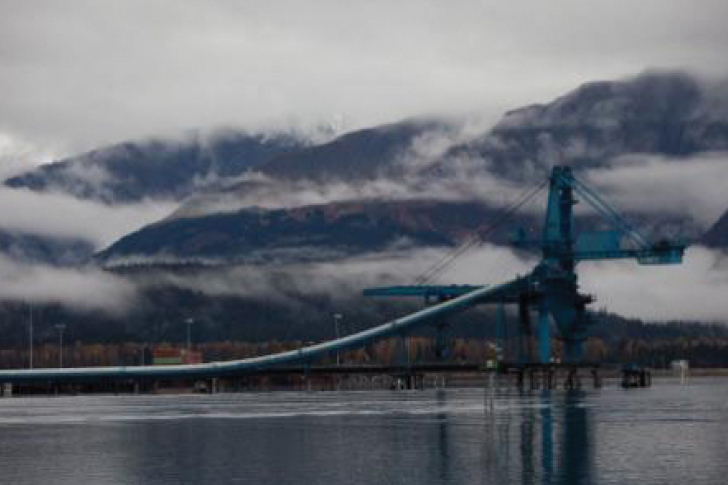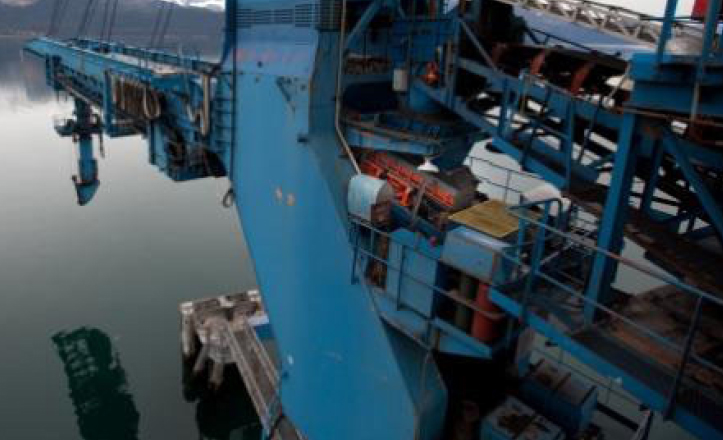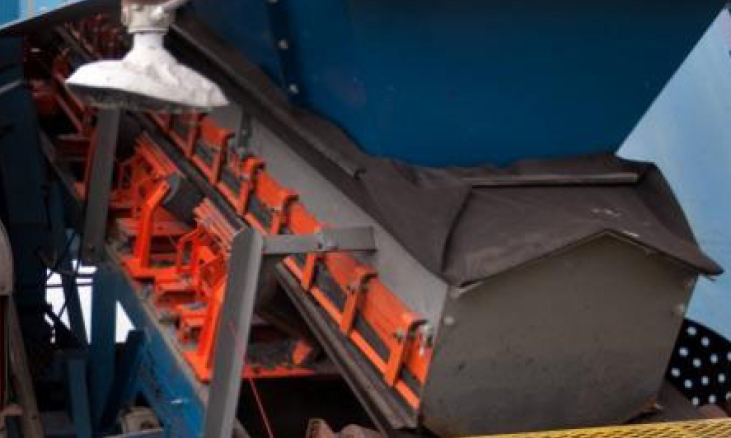Resources
| PDF - Printable Version of Case Study | Download |
| Products Used | ApronSeal™ Double Skirting |
|---|---|
| Product Types Used | Transfer Point Solutions , Belt Sealing |
| Industry | Ports and Terminals |
| Customer | Aurora Energy Services, Seward, Alaska |

To allow expansion of its cross-Pacific coal exports, Aurora Energy Services (AES) needed to increase the flow of coal through the shiploader at its Port of Seward terminal. But transfer chutes on the shiploader choked at rates above 750 mtph, which limited loading speed and slowed ship-turnaround. Even worse, the escape of coal dust during loading led to concerns from a nearby cruise ship dock and marinas, as well as environmental groups.

AES officials looked for ways to upgrade the terminal's material handling system and selected the EVO® Conveyor Architecture from Martin Engineering. Included in the improvements was a transfer chute, custom engineered for increased material flow without bottlenecks.
This hood-and-spoon chute provides consistent flow to reduce material spread and impact. Components of the EVO® System improve the serviceability, because they are accessible from outside the structure. The EVO® External Wear Liner and Martin® ApronSeal™ Double Skirting combine to prevent dust and spillage. "When AES management realized they could increase through-put, improve safety and reduce environmental impact all at once with the EVO® technology, they were all for it," said Terminal General Foreman Vic Stoltz.

With the EVO® System in place, the Port of Seward has raised its loading rate by more than 15 percent, to 850 mtph. Shiploading time has been cut by an average of 21 hours, resulting in a significant reduction in demurrage charges. With the improved control of the material stream, there is also less dust. Stoltz reports cleanup is minimal and the process is complete in less than four hours. "We've reduced the cleanup time on the shiploader and dock by over 40 With its slide-in/slide-out cradles and man-hours per ship," he added.
| PDF - Printable Version of Case Study | Download |

While your problem seems unique and frustrating, with 70+ years of solving similar problems around the world, and with the most experienced and educated people on our teams, we can assure you that we’ve “Been There, Done That.” At least close enough to know what needs to be done next and adjust for your situation.
Put Us To The Test For Free! Let Us Give You a Solution.